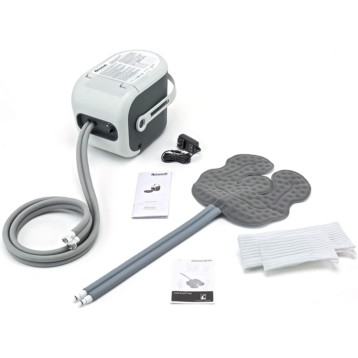
In the fast-paced world of healthcare, efficient management of data is crucial for quality patient care, research advancements, and streamlined operations. However, navigating through the sea of digital information can be overwhelming without proper data management solutions. In this article, we explore how healthcare organizations can effectively implement data management solutions to optimize processes, enhance decision-making, and ensure compliance with regulatory requirements.
1. Assessing Your Data Management Needs
Before embarking on a healthcare data management implementation journey, it’s essential to assess your healthcare organization’s unique data management needs. Evaluate the current state of your data infrastructure and understand the areas that need improvement. Identify key stakeholders who will play a vital role in implementing these solutions alongside IT professionals.
2. Understanding Data Governance and Security
Data governance lays the foundation for effective data management by defining policies, procedures, and accountability structures within an organization. Ensure that you have clearly defined rules for data access, storage, sharing practices, metadata management, and compliance requirements in place. Security measures such as encryption protocols and secure user authentication should also be paramount.
3. Selecting the Right Healthcare Data Management Solution
Choosing an appropriate healthcare data management solution is crucial to meet your organization’s unique requirements. Look for solutions that offer robust features like centralized storage options with high scalability capabilities. Evaluate their compatibility with existing systems. Be sure to implement those that seamlessly integrate with Electronic Medical Record (EMR) systems, clinical software applications, and laboratory information systems.
4. Streamlining Data Collection Processes
Efficiently managing healthcare data requires accurate and timely collection procedures in place. Automated approaches like electronic health record (EHR) systems can significantly streamline this process by capturing patient information directly at the point of care using structured templates instead of cumbersome paper-based methods. Ensure that your selected data management solution prioritizes interoperability among various medical devices.
5. Ensuring Data Quality and Accuracy
To maximize the value of healthcare data, it is essential to maintain data quality and accuracy. This involves standardizing data entry fields, implementing data editing protocols, and regular validation processes. Leverage machine learning algorithms and artificial intelligence tools that can continuously assess the integrity and cleanliness of your data.
6. Implementing Data Analytics Tools
Data analytics plays a crucial role in transforming raw healthcare data into meaningful insights. Make use of advanced analytics tools that can process large volumes of information, derive patterns, conduct predictive analysis, and generate reports for various stakeholders. Ensure that your solution can handle complex calculations without compromising performance or security.
7. Providing Training and Support
Transitioning to a new healthcare data management solution can be challenging for staff members who are accustomed to legacy systems. It is essential to provide comprehensive training programs suitable for different user levels with ongoing support from IT professionals or vendor experts for improved adoption rates.
8. Ensuring Compliance with Regulatory Requirements
Healthcare organizations face stringent regulatory requirements surrounding data privacy and security, such as HIPAA (Health Insurance Portability and Accountability Act). Your chosen healthcare data management solution should comply with industry-specific regulations while offering audit trails, access controls, risk assessments, and incident response plans to protect patient information effectively.
9. Integrating Data Management Solutions with Telehealth Services
With the rise of telehealth services, it is crucial to ensure that your chosen data management solution seamlessly integrates with virtual care platforms. This integration allows for the secure transmission of patient data, including video consultations, remote monitoring devices, and digital health records. Ensure that your solution is designed to handle large volumes of real-time data while maintaining compliance and security standards.
10. Continuous Data Monitoring and Improvement
Implementing healthcare data management solutions should not be a “set it and forget it” approach. Regularly monitor and analyze key performance indicators (KPIs) related to data quality, system uptime, user satisfaction, and operational efficiency. Leveraging tools like real-time dashboards enables healthcare organizations to actively identify areas of improvement, make necessary adjustments, and enhance their overall data management processes.
Conclusion
Implementing a robust healthcare data management solution is vital in today’s information-driven era to ensure high-quality patient care while supporting research initiatives and optimizing organizational efficiency. By following these best practices around assessing needs and governance, selecting appropriate solutions, streamlining processes, maintaining accuracy, utilizing analytics tools effectively, providing training and support, and ensuring compliance, you can successfully navigate the complexities of managing healthcare data. Streamlined operations will empower you to make informed decisions accurately while focusing on improving patient outcomes.










